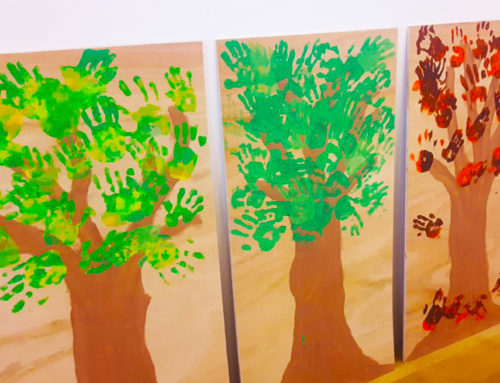
It was a noisy start to Friday at ANDInclusive, as Louise Barnell led an interactive sound scaping workshop in the inflatable gazebo. On the floor, Lou left all manner of household and found objects for students to use to create different sounds. It was nice to see students just having fun making scratching sounds on the floor and music using the objects. I sat with one student who was non-verbal and he and I ended up playing almost every tool that was there! It was wonderful seeing this young person so in his element, and this was something that I saw in countless other students involved in the residency.
Over lunch, a student from Garratt Park School held a 10 minute talk about his reaction to an artwork exhibited in the main Tate Gallery. I asked Tom, a teacher from Garrett Park School, about what he thought of disability representation within the main gallery. He loved the idea of celebrating artists who are displayed at Tate Modern, like Picasso, who have disabilities. He also liked the idea of the Tate exhibiting more work by disabled artists and having a database that young people with disabilities can search to find inspiration and role models. He told me about a painting in the Tate by Judith Scott depicting an artist isolated from outside influences as a result of the impact of deafness and Down syndrome. When he had shown this to one of his students who also had Down syndrome, the boy’s face completely lit up!
Watch Garratt Park’s 10 minute talk below
Dwayne was asked what words he would use to describe the artwork Tropicália by Hélio Oiticica. This is his response…
I think it’s extremely important for children and young people with disabilities to have role models who they can relate to and look up to. Creating representation in any field can really have an effect on individuals, and I think this is something that needs to be better addressed in wider society.
Talking to Tom about the Tate Exchange space, he thought it was better curated than last year, and said that this year there were clearer assigned spaces for activities, and on the whole it looked a lot tidier. He explained to me that this is especially important for young people with autism, as they feel far more relaxed and can better adapt to the environment if they come into a clean and less busy space. I also asked whether he thought having the space arranged in such an open way created more room for collaboration. He commented, “the marking of yellow tape on the floor allowed students to easily and clearly distinguish where they were going. It was great having the space very open as it allowed for clear direction and spacing.” He also said, “having a room set aside for different activities also allowed for better flexibility and use of the space.”

When asked how he thought we could improve if we were to do it again next year, he thought it would be good if optional ear defenders could be provided for students who are sensitive to noise. He also thought it would be nice to have some sort of interactive sharing platform so teachers could bring back a piece of the day for students who might not necessarily be able to come along. A staff member from The Complete Works also mentioned that having a ‘quite day’ for smaller groups would be very beneficial, and it would be nice to provide more chill-out areas for students.
One of the points I remember coming out of discussions at last year’s ANDInclusive residency was the need for more events like this – where people can come together to connect, share and have conversations about inclusion and diversity. Towards the end of the day, there was an opportunity to do just this as a group of around 25 individuals from SEND schools and the arts and culture sector came together for a roundtable discussion on how can we better support the growth of cultural opportunities for young people with special needs and disabilities.
The discussion raised some questions around development such as: how can A New Direction help amplify opportunities across different platforms? Should we be carrying out audits for development? Should we embed disability rights through cultural activities and art forms, and if so, how?
A recurring point was that attendees felt more collaboration is neededacross sectors to make sure opportunities for young people are improved and shared, with a volunteer from the Tate telling me that she thought more collaborative events like this were long overdue. She said there seem to be lots specific networks, but where can everyone come together and connect? And how? And through what? I personally think it is about making these sorts of platforms available and visible.

Another point which particularly resonated with me was the need to ensure more ‘end users’ have a platform and can engage in discussions. As a designer, my work is specifically about creating something which is a collaboration between the end user and the professional. I think whether you’re designing for a particular need, trying to create inclusive environments in your school or organisation, or devising a piece of work with inclusion at its heart, you must always be working in collaboration with your end users.
This also applies to discussions around diversity; we should be talking about including people from all walks of life, including people with dissabilities. For example, there’s no point talking about inclusivity and diversity within an arts environment for disabled people if you haven’t got at least, in my opinion, a 50:50 split of disabled people and able bodied people. Without input from your end users, there will be no real improvement, so only when we do this can we can real change happen.





